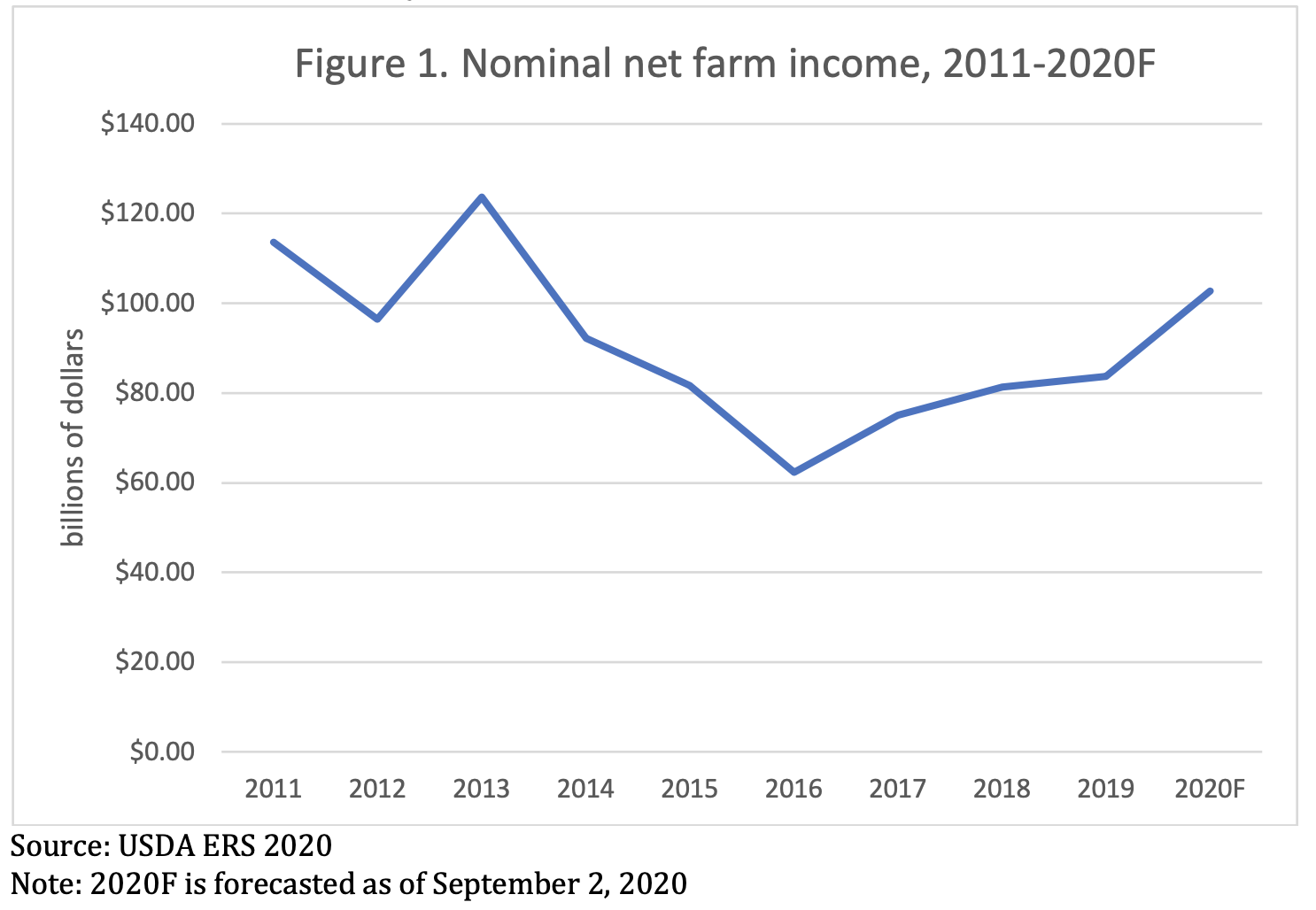Sept. 11, 2020
USDA forecasts 23 percent rise in 2020 net farm income, due largely to government payments
By Ryan McGeeney
U of A System Division of Agriculture
Fast Facts:
- USDA forecasts U.S. net farm income at $102.7 billion in 2020
- Includes $37.2 billion in direct federal payments
- Cash receipts in most ag sectors down
(386 words)
(Download this story in MS Word format here.)
FAYETTEVILLE, Ark. — Net farm income for U.S. producers in 2020 is forecast to rise 23 percent over 2019 figures, growing to about $102.7 billion, according to a report this week from the U.S. Department of Agriculture’s Economic Research Service.
The growth in overall income has occurred despite falling cash receipts for almost every sector of the agricultural economy, from row crops to cattle sales, according to an analysis prepared by James Mitchell, assistant professor of livestock marketing and management for the University of Arkansas System Division of Agriculture.
Mitchell’s analysis shows that the recovery is largely due to direct payments from the federal government, as well as ad hoc and emergency payments delivered in reaction to natural disasters.
“USDA forecasts 2020 direct farm payments at $37.2 billion, a 65.7 percent increase over 2019 direct farm payments,” Mitchell said. “These direct government payments for 2020 will account for 36.2 percent of net farm income. In 2019, direct payments accounted for 26.8 percent of net farm income.”
Supplemental and “ad hoc” payments for COVID-19 pandemic relief account for most of the increase in direct farm payments, Mitchell said. While the USDA report was published on Sept. 2, it forecast farm income through Dec. 31.
Overall, cash receipts for crops are forecast to rise about 1 percent over 2019, with food grains falling more than 6 percent, feed crops falling nearly 4.5 percent and cotton falling more than 7 percent. One notable rise in 2020 is cash receipts from fruits and nuts, which is forecast to rise more than 17 percent over 2019.
From 2011-2018, annual direct farm program and disaster payments remained between $10 billion and $15 billion; in 2019, they exceeded $20 billion before continuing their rise to current levels. Similarly, supplemental and ad hoc disaster assistance accounted for a very small percentage of farm net income over the past decade — the most notable deviation being 2014, when such assistance accounted for 5.1 percent of net farm income. In 2020, by comparison, disaster assistance is projected to account for about 22.8 percent of net farm income, according to Mitchell’s analysis.
The analysis is part of a series of impact reports regarding the COVID-19 pandemic and its effects on agriculture and other aspects of the economy from the Division of Agriculture.
To learn more about extension programs in Arkansas, contact your local Cooperative Extension Service agent or visit www.uaex.uada.edu. Follow us on Twitter at @UAEX_edu.
About the Division of Agriculture
The University of Arkansas System Division of Agriculture’s mission is to strengthen agriculture, communities, and families by connecting trusted research to the adoption of best practices. Through the Agricultural Experiment Station and the Cooperative Extension Service, the Division of Agriculture conducts research and extension work within the nation’s historic land grant education system.
The Division of Agriculture is one of 20 entities within the University of Arkansas System. It has offices in all 75 counties in Arkansas and faculty on five system campuses.
Pursuant to 7 CFR § 15.3, the University of Arkansas System Division of Agriculture offers all its Extension and Research programs and services (including employment) without regard to race, color, sex, national origin, religion, age, disability, marital or veteran status, genetic information, sexual preference, pregnancy or any other legally protected status, and is an equal opportunity institution.
# # #
Media contact:
Ryan McGeeney
Communications Services
University of Arkansas System Division of Agriculture
Cooperative Extension Service
(501) 671-2120
rmcgeeney@uada.edu
